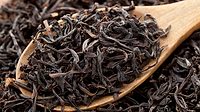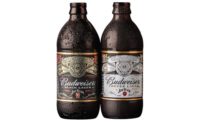Whether it’s hot, iced, on-the-go or unwinding at home after a long day, I enjoy a good cup of tea. It seems as though I am not the only one. GlobalData reports that in 2019, the U.S. hot tea market stood at $2.8 billion and is expected to have a compound annual growth rate (CAGR) of 4.8 percent through 2023, reaching $3.4 billion. The projected growth is expected to come from the category’s plethora of innovative solutions.
“New, distinct flavors are a key driver of the hot tea market,” said Carmen Bryan, consumer analyst at United Kingdom-based GlobalData, in a statement. “Globalization and migrating influences from Asia has led to the rise in green and herbal teas, with Western consumers demanding their own spin on these favorites, and new, distinct flavors being a key driver.”
The market research firm also highlighted how generational demographics are coming into play when it comes to tea innovations. Citing its 2019 Q4 consumer survey, GlobalData found that 48 percent of U.S. consumers indicate that traditional black tea is the type of tea that they most often consume. However, that number is only 19 percent if you just ask Generation Z consumers, who named green tea as the varietal most likely to be consumed with 38 percent of respondents indicating as such.
Flavor also is a major driver for Gen Z and millennial consumers when it comes to tea. When asked about flavor/infusion preferences, Gen Z reported herbal and sweet flavors at 67 percent each, respectively. By comparison, millennials stated fruity and herbal teas with 72 and 64 percent, respectively, according to GlobalData’s survey.
Bryan’s analysis highlights the opportunities that this research presents when it comes to tea innovations.
“This offers manufacturers the chance to premiumize their offerings, leveraging on unique flavor combinations, as well as natural and sustainable labels that feed into consumers’ perception of ‘high quality,’” she stated.
Psychic TEAZ is furthering the premium tea market with its collection of loose-leaf teas that are designed by a naturopathic doctor to keep musicians healthy while touring. Its most recent release is Champagne, which contains red rooibos, dehydrated grapes and grape skin, carrot powder, nettles and stevia.
Another example is the Matcha Latte Infusions line from Jade Leaf Matcha. Available in four varieties — Glow, Protect, Think and Balance — each infusion blends functional ingredients and adaptogens into CCOF-certified organic Japanese matcha.
Although the premium path could create opportunities for the hot tea market, GlobalData’s Bryan stated that it will not be without its challenges — even from within its own category.
“[O]bstacles remain to achieving the type of growth coffee has seen, especially out of home,” she said. “The ready-to-drink (RTD) tea segment remains a threat to the hot tea market, as it is quicker and easier to consume on-the-go. Convenience is a deciding factor for many consumers, and, if given the choice, they will often opt for a RTD tea/beverage rather than waiting the few minutes it takes to brew a cuppa.”








